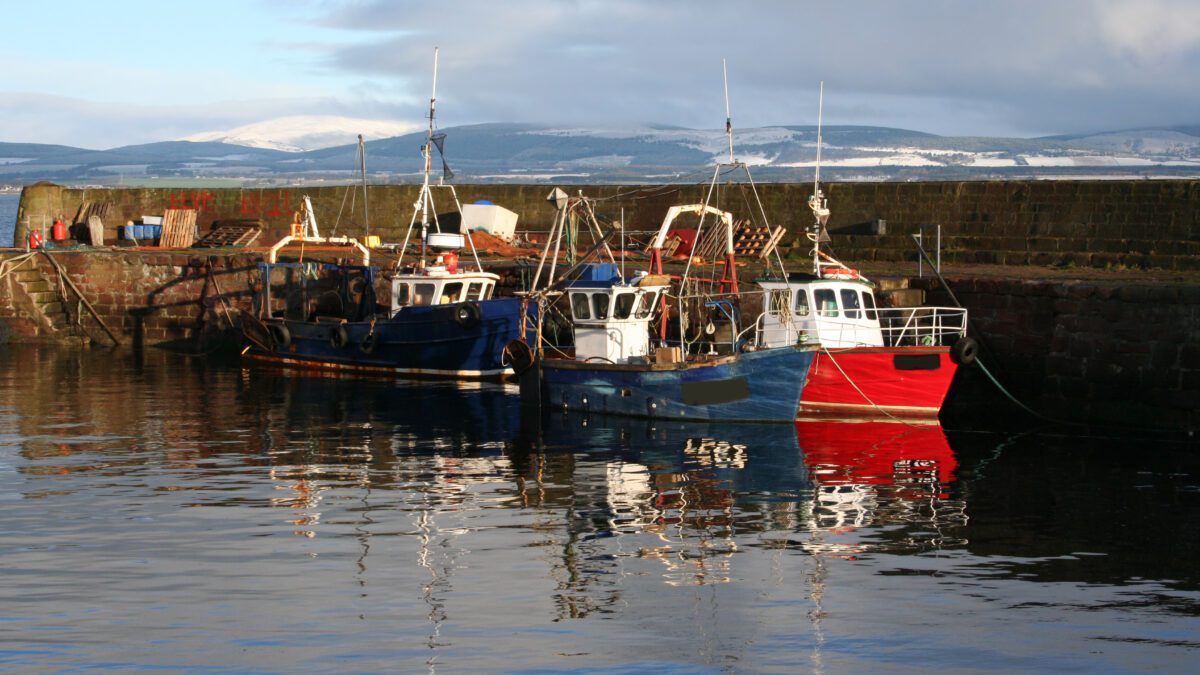As we pay more attention to the impact we have on the planet through the things we eat, seafood is increasingly seen as a positive choice. Carbon emissions vary depending on the species but can be exceptionally low.
“The diversity in seafood choice means the carbon footprint for some species is amongst the lowest for all proteins,” says Dr Stuart McLanaghan, head of responsible sourcing at Seafish, the public body supporting the seafood industry in the UK.
“This makes it a climate ‘smart’ food which can help meet the nutritional needs of a growing global population. The carbon emissions for a portion of whitefish or farmed salmon are modest and comparable to a portion of chicken.
“The emissions for other seafood species are comparable to plant-based proteins: small pelagic fish, like herring, can be very low, while cultivated mussels have among the lowest carbon footprints at the point of production.”
On the other hand, the processes involved in catching or farming seafood and then transporting it to market can create heavy carbon footprints.
“Key steps can, and are, being taken by the industry. These include investing in energy-efficient gear and vessels, looking at alternative lower-carbon feed sources for aquaculture production, using renewable electricity in processing facilities, and exploring alternatives to air freight by combining cooling technology, such as super-freezing, with sea freight,” says McLanaghan.
Some positive steps are already being taken in Scotland. On Mull, Inverlussa Marine Services has invested in fully-hybrid vessels.
Inverlussa supplies vessels and crews to operate and maintain aquaculture sites on the west coast and in a move away from traditional diesel engines in 2021 launched a diesel-electric vessel, the Camilla Eslea, and the Laurence Knight, a fully-hybrid vessel.
The company says the hybrid technology vessels offer extended periods of operational duties on site of up to six hours solely powered by batteries. They can be charged using plug-in shore power, or self-charged when a generator is in operation.
Avoiding running generators during peak operational loads, or sitting on idle, has reduced fuel usage and CO2 emissions by up to 35 per cent. The reduction in noise, vibrations and gases also makes the vessels more comfortable to live and work with.
Seafish is also supporting the wider fleet to transition to net zero by convening the Vessels of the Future Forum, which met for the first time at the end of 2022.
Chaired by Mike Cohen, of the National Federation of Fishermen’s Organisations, it brings together representatives from the fishing and aquaculture industry, boat builders, surveyors, harbours, engine manufacturers, research community and governments.
“Ours has always been an adaptable industry and this forum seeks to harness that ingenuity, to make fishing’s contribution to the aspiration of a net-zero economy even greater,” Cohen said at the launch.
Understanding the carbon footprint of activities is an important first step in identifying emissions ‘hotspots’. Reliable data is key to informing business plans and investment decisions, to drive supply-chain improvements.
Seafish is currently redeveloping its seafood emissions profiling tool to enable businesses to explore the carbon implications of sourcing and supplying seafood. Specific research projects are also helping. A 2021 study looked at how the carbon footprint of pelagic fish compares to other food products.
In the UK, small pelagic fish make up more than 50 per cent of all sea fish landings by weight; most of this is caught by the pelagic fleet based in the north of Scotland and Shetland. It consists mainly of vessels of over 40m that target mackerel, herring and blue whiting in the North Sea and north-east Atlantic.
Frances Sandison, a PhD student at Aberdeen University, said: “The size of the vessels, and the distances they travel off shore to target shoals of pelagic fish, raised questions about the fleet’s carbon footprint.”
As a result a study, funded by the seafood industry and organisations in Shetland, assessed the carbon footprint of Atlantic mackerel caught by the Shetland-based pelagic ships. It determined that the Shetland fleet had a very low carbon footprint compared to other food sources. A further study found the pelagic fish processing sector also had a low carbon footprint.
“Approximately two thirds of protein consumed in Scotland are comprised of processed meats, chicken and beef. However this research shows that if the general public replaced even one meal per week with Scottish-caught pelagic fish we could see a decrease in protein-related dietary carbon footprint. Not to mention the health benefits of eating seafood and importance of supporting local economies,” says Sandison.



